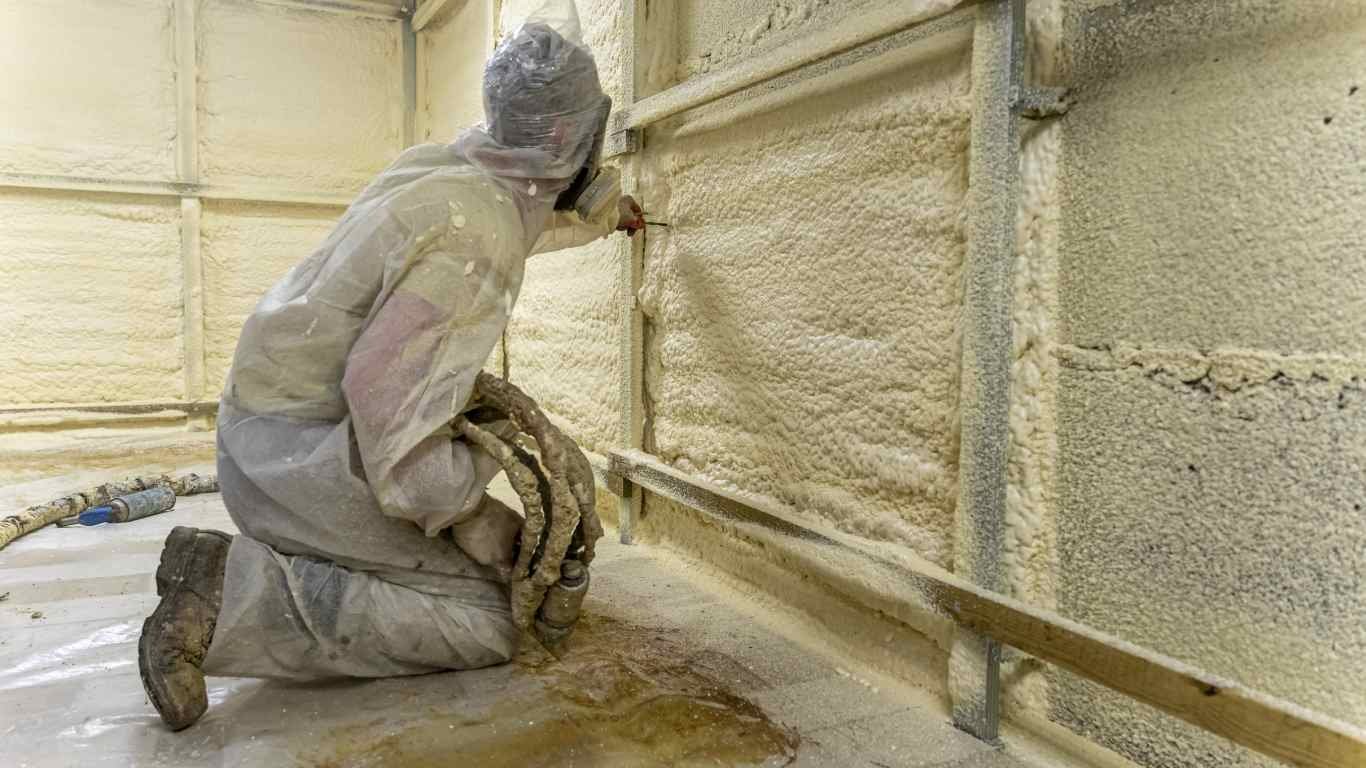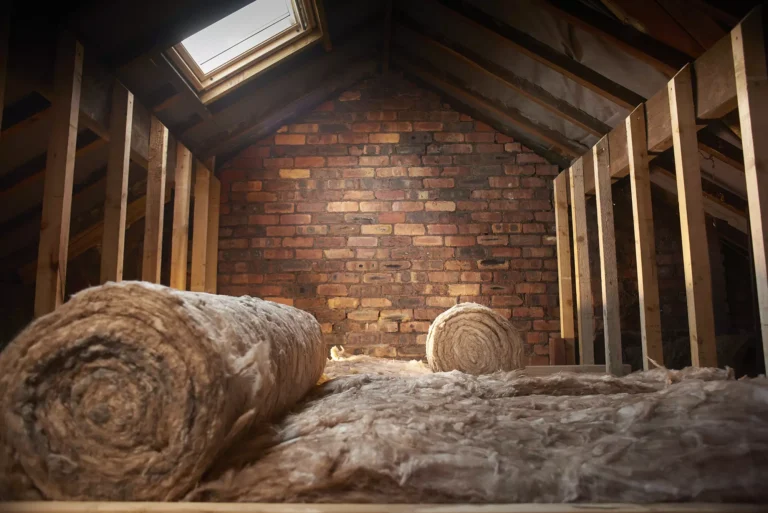Blog
Fiberglass Insulation Mold: A Comprehensive Guide to Cause, Risks, and Prevention
Fiberglass insulation may come to mold growth. While it is not a primary food source for mold, it can become a breeding ground under specific conditions. So, fiberglass insulation mold can grow in poor ventilation and moisture intrusion.
In this post, we will explore the causes of mold on fiberglass insulation, its potential health risks, and effective prevention and remediation strategies.
Cause of Growing Fiberglass Insulation Mold
Mold growth on the insulation is caused by spores originating from the roof sheathing above. This mold grows on the insulation because the settled dust accumulates on its surface.
Early Signs of Fiberglass Insulation Mold
Visible water droplets on fiberglass insulation are a sign of significant moisture buildup. Even minimal moisture accumulation within the insulation can foster mold growth. This condensation indicates a serious ventilation or insulation issue that requires immediate attention.
Mold growth typically appears as discolored patches on surfaces. These patches can range from small spots to large areas and often have a fuzzy, slimy, or powdery texture. Mold is identifiable by its characteristic musty odor. Initially, mold spores may look like tiny spots on walls, ceilings, or floors.
Cause of Growing Fiberglass Insulation Mold
Mold growth on the insulation is caused by spores originating from the roof sheathing above. This mold grows on the insulation because dust accumulates on its surface.
Cause of Growing Fiberglass Insulation Mold

Visible water droplets on fiberglass insulation are a sign of significant moisture buildup. Even minimal moisture accumulation within the insulation can foster mold growth. This condensation indicates a serious ventilation or insulation issue that requires immediate attention.
What Are the Risks of Fiberglass Insulation Mold?
Here are the effects of fiberglass insulation mold:
- Health Impacts: Inhaling mold spores can have detrimental health effects for those susceptible. Exposure may cause respiratory problems, allergic reactions, and other health issues.
- Property Damage: Mold weakens and damages insulation materials over time, reducing insulation effectiveness.
Protecting Your Home from Mold with Fiberglass Insulation
Fiberglass insulation has the potential to retain moisture and cause condensation issues. Vapor barriers placed correctly are crucial when using fiberglass since it’s vital to prevent water vapor from reacting with cold surfaces. Extruded foam board and spray foam insulation are increasingly common options for damp spaces in homes, such as the basement or crawlspace, due to their excellent insulating qualities, ability to seal air leaks, and relative imperviousness to moisture.
Mold can develop on the surface of these materials, just like on any other surface, although it is usually pretty simple to scrape off and remove. Although there have been some reports of these materials off-gassing, most people are unlikely to experience any adverse health effects. Also, it is a mold resistant insulation for the basement.
Why does Fiberglass Insulation Still Get Mold?
Glass and plastic fibers are combined to create fiberglass insulation, which traps air to inhibit heat transfer. The material's composition makes it mold resistant insulation, as mold requires a food source to thrive. Additionally, fiberglass insulation effectively repels moisture, a crucial element for mold proliferation.
Why is Mold Growing on Fiberglass Insulation?
Fiberglass insulation is resistant to mold growth. Poor ventilation, condensation, and moisture intrusion create ideal conditions for mold spores to thrive on the insulation's surface.
Improper insulation installation can lead to severe moisture issues. In particular, installing standard fiberglass batts directly onto roof sheathing is a common mistake. Since fiberglass isn't vapor-impermeable, moisture can easily penetrate, causing mold growth and potential roof damage. For optimal performance and to prevent these issues, closed-cell foam insulation should be installed directly on the roof sheathing in conditioned attics.
Prevention Tips for Fiberglass Insulation Mold
Mold prevention is crucial for protecting insulation and indoor air quality. To do this, follow the tips:
- Proper ventilation is the key to reducing moisture buildup, a primary cause of mold growth.
- Sealing leaks, especially around pipes and roofs, is essential to prevent water intrusion.
- Correct insulation installation, regular inspections, and mold-resistant materials like spray foam can further minimize the risk of mold development.
Removing Mold on Fiberglass Insulation
Removing mold can be hazardous. For extensive mold infestations, consider hiring a professional mold remediation specialist.
- Wear appropriate personal protective equipment (PPE), including a respirator, gloves, and eye protection.
- Use plastic sheeting to isolate the mold-affected area, preventing spore dispersal.
- Carefully remove the moldy insulation, disposing of it in sealed bags.
- Disinfect the area with a bleach solution (follow label instructions). Allow it to dry completely.
- Use a dehumidifier to reduce humidity levels and prevent future mold growth.
- Install new, mold-resistant insulation.
Replace moldy insulation with Confirmed Contracting Corp.
Replacing your old insulation with new, mold-resistant material will eliminate mold problems. Removing the old insulation can also help prevent mold spores from spreading and reduce the risk of future growth.
When detecting black mold immediately on insulation, walls, floors, or ceilings, contact a mold remediation expert as soon as possible. Early intervention prevents mold spread.
Confirmed Contacting Corp provides a complimentary inspection and estimate, ensuring a smooth and hassle-free experience while handling all the necessary paperwork. Additionally, we connect you with trusted lenders to secure your loan, allowing you to sit back and let us take care of the rest.
FAQ | Fiberglass Insulation Mold
While fiberglass is resistant to mold, it can become moldy. Moisture, dust, dirt, and other organic particles can accumulate on the insulation, providing a food source for mold. Also, poor ventilation can contribute to moisture buildup and mold growth.
Fiberglass insulation is not inherently mold-resistant. But, growing mold on it is less likely than other materials because it's not a primary food source. The key to preventing mold is maintaining a dry environment.
You should remove and replace it with the aid of professionals because of the health risks of moldy insulation whiteout precaution.
There are some DIY techniques to remove fiberglass insulation mold, but hiring a professional can reduce potential health risks.
more insights

Is There Asbestos in Your Loft? What to Know Before Insulation Removal
If your home was built before the 1990s, there’s a chance that your loft insulation could contain asbestos—a hidden danger

Best Heat Pumps for Cold Climates in Canada: Top Picks for 2025
Canadian winters are no joke, and heating your home efficiently is more important than ever. In 2025, cold climate heat

Top 5 Signs Your Basement Needs New Basement Insulation (and What to Do About It)
Your basement plays a huge role in your home’s comfort, energy efficiency, and even air quality—but only if it’s properly